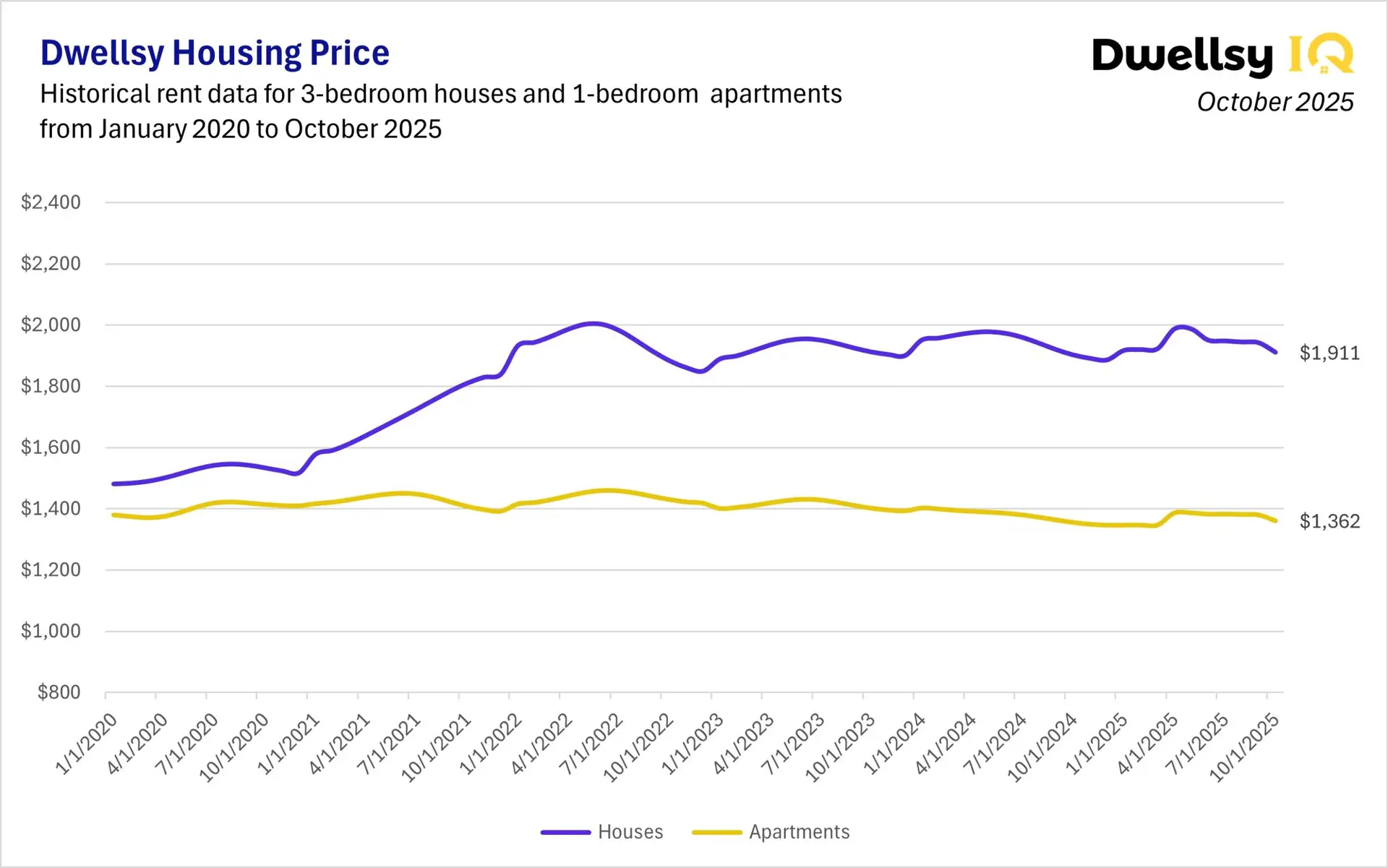On February 11, Zillow and Redfin made a move that sent shockwaves through the rental listings industry: Zillow will take over multifamily rental listings on Redfin’s platform.
In effect, Zillow and Redfin are merging their rental classifieds businesses.
Zillow will pay Redfin $100 million upfront, along with ongoing payments for lead generation, to secure all multifamily rental leads from Redfin’s rental platform (“Rent.”). This includes sites such as Redfin, ApartmentGuide, and Rent.com. Additionally, Zillow’s listings will now appear on these sites, further expanding its reach.
This deal reduces the number of major pay-to-play rental listing platforms from three (CoStar, Zillow, and Redfin) to just two.
A Big Win for Redfin
Redfin’s rental platform—formerly RentPath, which they acquired in 2021—has been a financial drag since day one. While their financial reporting makes it difficult to precisely estimate losses more recently, their 2022 annual report explicitly identifies a ~$21 million loss on just over $150 million in revenue. Recent reports suggest they may have approached breakeven, but even with an annual revenue run rate of $200 million, profitability was uncertain at best.
As the third-largest player with only about 10% share, Redfin faced ongoing losses due to its sub-scale operations. A new strategy was needed.
With this deal, Redfin secures a $100 million cash infusion ($80 million net after layoff costs) and a steady revenue stream from selling leads to Zillow, all while eliminating major expenses such as sales and marketing. Redfin is laying off 450 employees—reportedly the majority of its rentals division—leaving only a small team of technologists and marketers to maintain traffic flow.
By offloading the costs associated with operating a rental listing platform, Redfin’s ongoing expenses will be minimal. Essentially, they retain a hosting bill and get a new revenue stream from Zillow while continuing to engage with renters and guide them toward homeownership under the Redfin brand.
This is a major improvement over their previous model, which involved spending $200 million to generate $200 million in revenue.
Zillow’s Strategic Power Play
For Zillow, this deal is nothing short of a coup.
In one move, Zillow gains a significant boost in traffic and indirect control over some of the most recognized rental listing brands. ApartmentGuide and Rent.com, once dominant platforms in the industry, still carry strong SEO and brand recognition.

Zillow, which has approximately $450 million in annual rental advertising revenue, has long been the #2 player behind CoStar (which is nearing $1 billion in revenue from rentals). However, Zillow has been growing much faster.
If Zillow captures two-thirds of Redfin’s rental revenue, it stands to gain around $130 million in new annual revenue. Considering the $100 million acquisition cost will be amortized over many years—and given Zillow’s $2 billion cash reserve—the primary ongoing expense will be lead acquisition. Zillow has a strong grasp on lead value and cost, and it’s safe to assume that this deal is a highly favorable long-term investment on a per-lead basis.
In essence, Zillow just secured a 30% revenue boost at a relatively low cost while keeping its ongoing expenses at or below its current cost per lead.
CoStar Benefits Indirectly
CoStar, the dominant player in rental listings, also stands to gain.
In 2020, CoStar attempted to acquire RentPath, but the deal was blocked due to government concerns over reduced consumer choice. While CoStar isn’t directly involved in this new transaction, it is still poised to benefit.
Many rental property advertisers list on only one platform, choosing between CoStar, Zillow, and Redfin. With Redfin exiting the game, some advertisers who previously used Redfin will shift to CoStar. Early industry discussions suggest CoStar could capture around one-third of this business—potentially an additional $65 million in annual revenue. This could push CoStar’s rental revenue past the $1 billion mark.
Unlike Zillow, CoStar incurs no upfront acquisition costs. Most of this new revenue will go straight to the bottom line, and with less competition, CoStar may also be able to increase pricing on its existing services.
The Losers: Landlords, Property Owners, and Renters
With only two major players left, Zillow and CoStar now have greater pricing power.
In 2016, I paid an average of $300 per month to feature a rental community on the first page of search results in a major market on Zillow or Apartments. At the time, CoStar had $225 million in rental advertising revenue, and Zillow had $100 million—totaling $325 million between the two.
Fast forward to today: rental listings have consolidated from over 50 paid platforms to just two primary competitors, and Craigslist—once a major player—has faded into irrelevance. As a result, rental listing prices have soared.
What used to cost $300 per month can now range from $2,500 to $9,000 per month—up to a 30x increase in just nine years. Today, Zillow and CoStar generate over $1.4 billion in rental advertising revenue, and this deal will push that number even higher.
While these platforms have certainly created value, the increased costs have made things challenging for landlords, property managers, and owners. Marketing expenses have eroded property profitability, and reduced competition will only exacerbate this trend.
Renters will also suffer as reduced choice and higher costs carry through to them.

The rental search experience increasingly mirrors John Steinbeck’s The Pearl, where the illusion of competition masks the reality of a consolidated marketplace. Many renters don’t realize that most rental listing sites—Zillow, Trulia, Redfin, StreetEasy, HotPads, Rent.com, ApartmentGuide, and Rentals.com—are owned by the same companies and display the same inventory. The illusion of choice doesn’t translate into real competition.
How Dwellsy Fits Into the Picture
Dwellsy operates on a fundamentally different model than pay-to-play listing platforms. While Zillow and CoStar battle over the ~15% of rental units that pay for listings, Dwellsy hosts over one-third of all rentals nationwide and continues to grow as the largest and most comprehensive rental listing platform.
Dwellsy’s core principles remain unchanged since its founding over six years ago:
- Free Listings: Dwellsy is and always will be a free platform for property managers to list their available units.
- High-Quality Leads: Dwellsy is built from the ground up to deliver the highest quality leads–our goal is a healthy marketplace, not lead volume maximization. And, leads are delivered directly to the property manager in whatever method they choose: Email, phone, Elise AI, etc.
- SEO & Backlinks: Listings on Dwellsy enhance property and manager websites’ SEO performance.
- Multifamily and SFR: Dwellsy is built on the unit model, so we welcome both SFR and multifamily listings seamlessly–which is what renters want, since many of them are looking at both as options.
- Seamless Integration: Direct integrations with major property management software make listing and maintaining a presence on Dwellsy effortless.
- No Commitment: Want to list on Dwellsy? Just click the button in your property management software or send us a direct feed. If you get sick of free, high quality leads, cancel at any time.
- No Trade-Offs: Since listings are free, landlords and property managers can showcase all their units, maximizing visibility and lead generation.
As the lowest-cost and highest-quality rental listing platform, Dwellsy remains an attractive alternative for landlords, owners, and property managers looking to increase visibility, generate more leads, and rent units more efficiently.

With the rising costs of pay-to-play platforms, we expect this industry shift to further accelerate Dwellsy’s growth. Our DwellsyIQ suite will continue to get better, providing deeper insights into rental market trends and pricing as the marketplace grows.
We’re particularly excited about CompIQ, our revolutionary market rent research tool. Unlike traditional black box pricing tools, CompIQ gives the user full control over which comps to include as they work–quickly and intuitively–toward establishing what the market rent is for any multifamily or SFR property in the country.
Plus, as with all DwellsyIQ products, CompIQ exclusively uses public data sourced directly from the 15 million plus units that list on the Dwellsy marketplace (we would NEVER scrape), there are no compliance issues and you’re working with real data, not a proxy.
In a rapidly consolidating rental listings market, Dwellsy stands apart—offering real choice, real competition, and real value for both landlords and renters.



